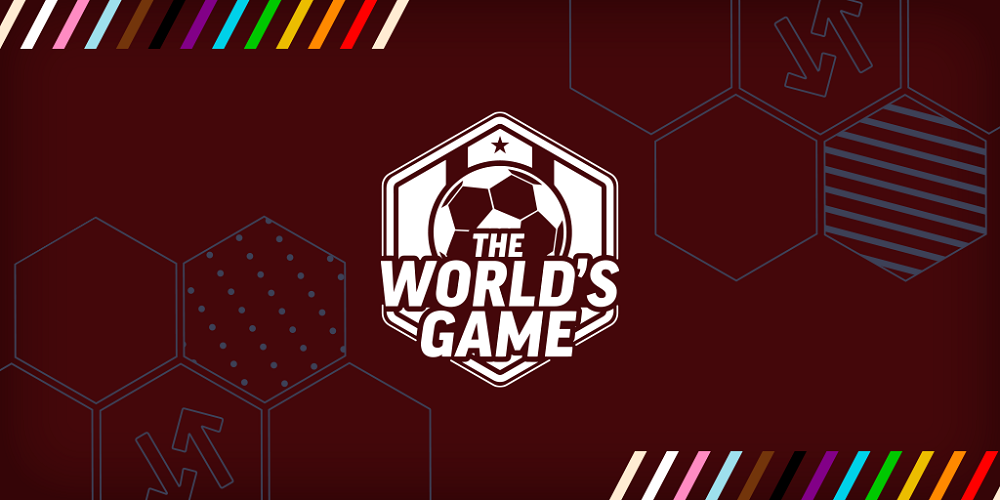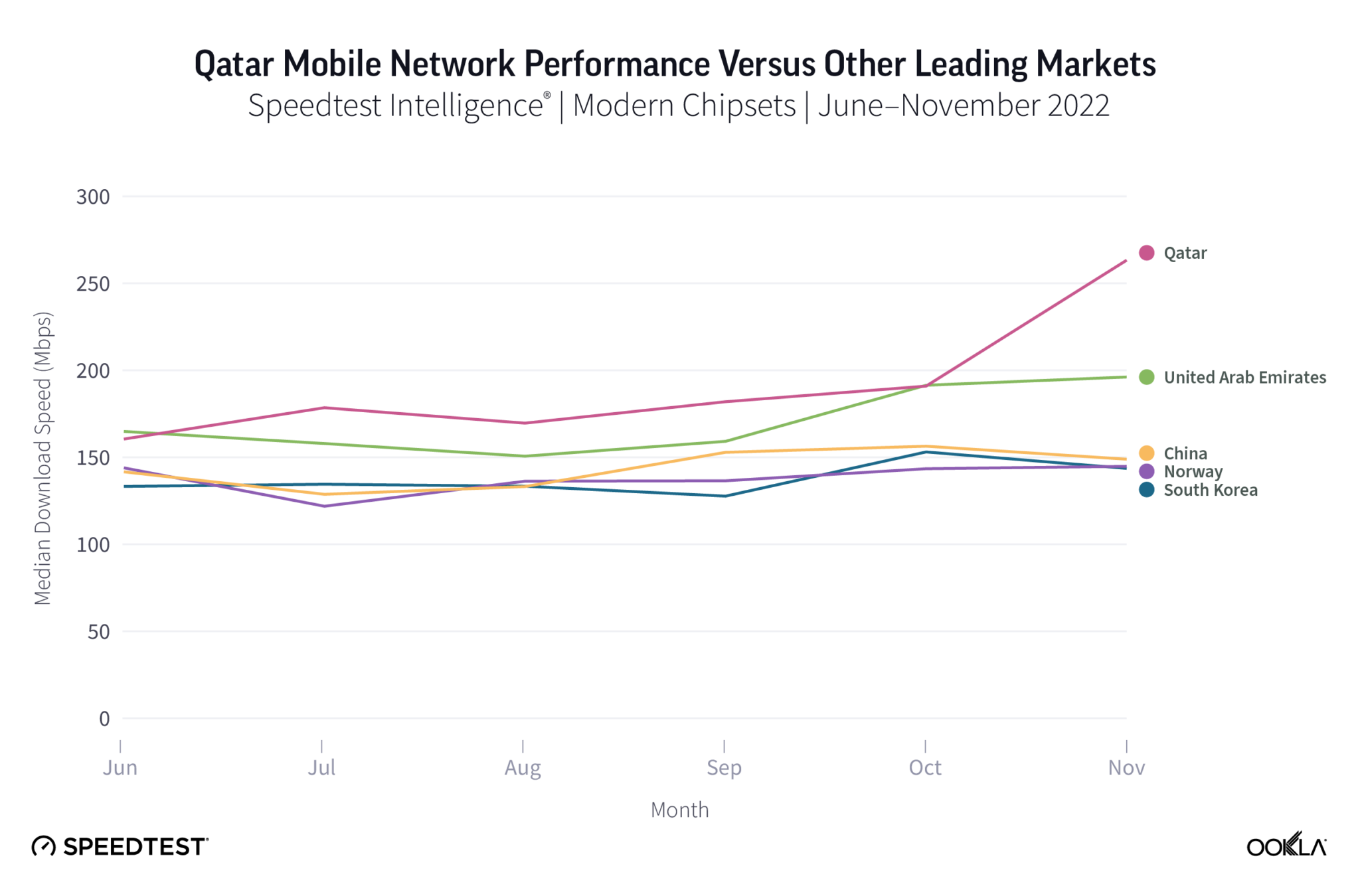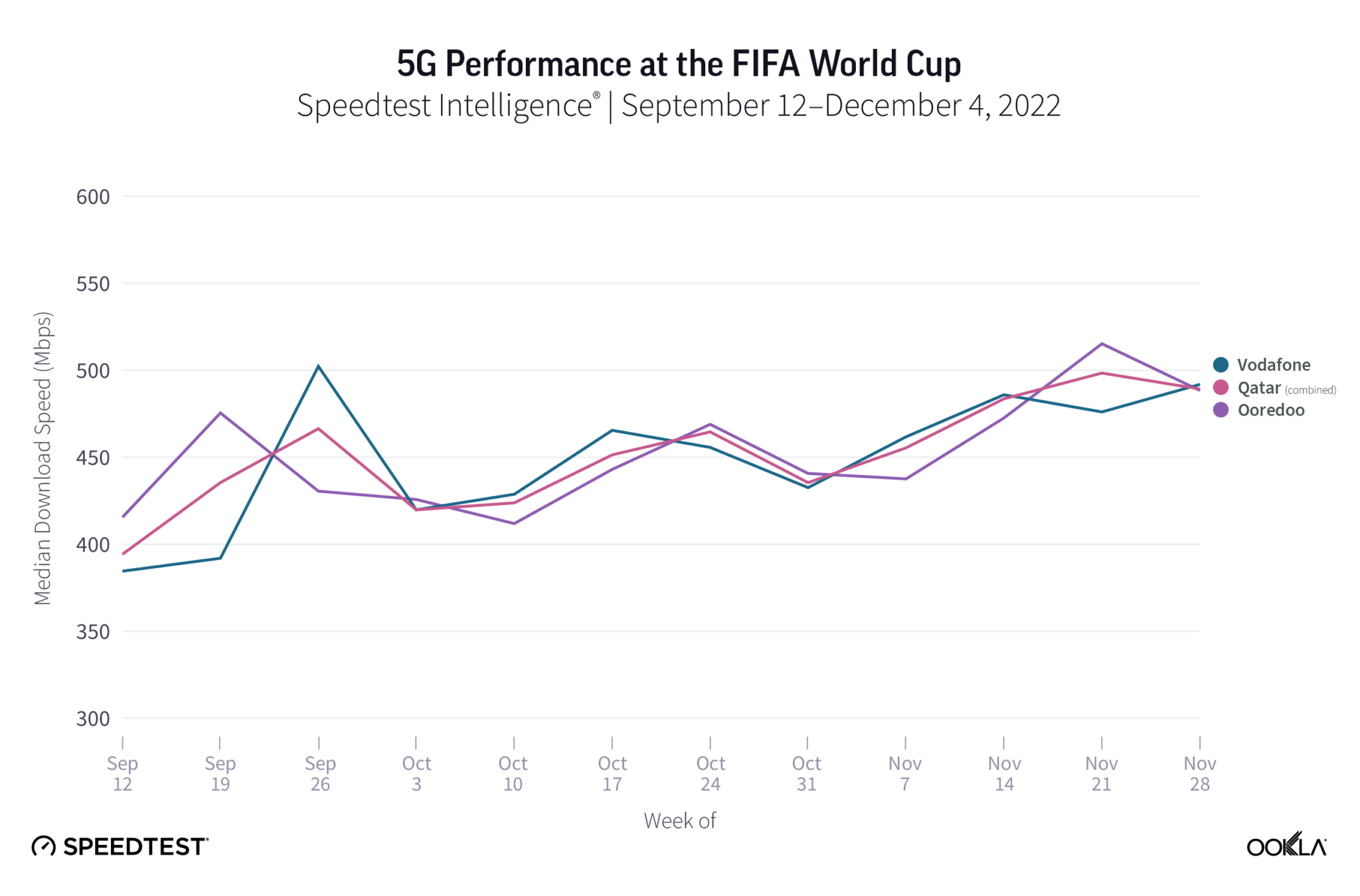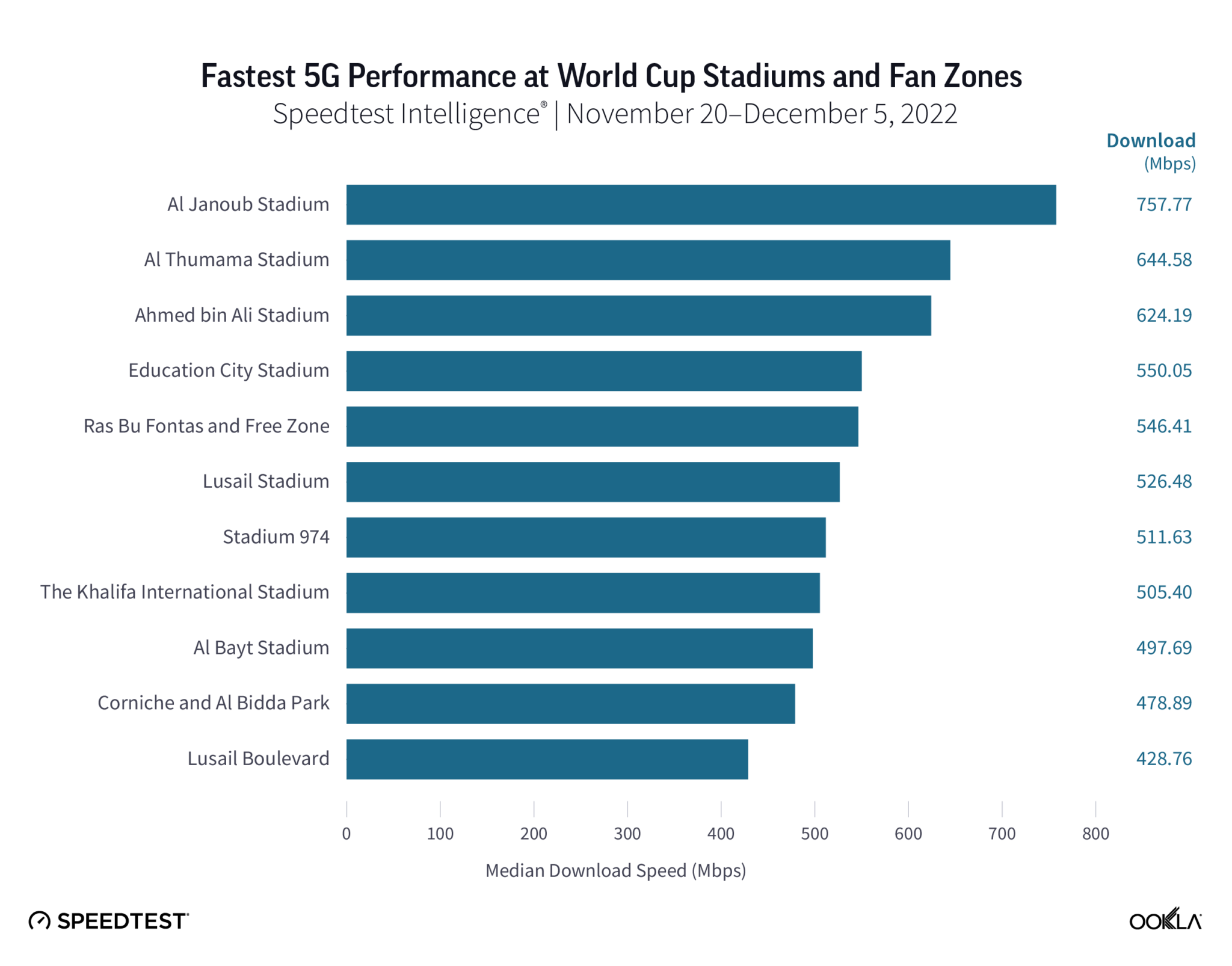
Key messages
The first FIFA World Cup® supported by 5G networks
Awarded in December 2010 to Qatar, this year’s FIFA World Cup is the first to take place in the Middle East, and the first to be supported by commercial 5G networks. Ahead of the event, we outlined the important role of the Qatar Communications Regulatory Authority (CRA) and both Ooredoo Qatar and Vodafone Qatar in driving performance gains in the market. A competitive, pro-investment market environment has paid dividends, coupled with firm commitments from both operators to roll out commercial 5G networks in all densely populated areas and all venues associated with the FIFA World Cup.
As of December 3, 2022, after almost two weeks and 48 games, the FIFA World Cup has seen over 2.45 million cumulative stadium attendees. For a country with a population of 2.93 million, ensuring mobile network performance meets expectations has been no easy feat. Ookla® was keen to understand how Qatari mobile networks were handling the deluge of visitors and additional traffic. According to Speedtest Intelligence®, median download performance in November rose to 263.37 Mbps on modern chipsets across all mobile technologies combined, with median 5G download performance hitting 472.13 Mbps.

Fans visiting Qatar for the World Cup™ have benefitted from the offer of local SIMs from national mobile operators Ooredoo and Vodafone, which include free data. Ooredoo SIMs include 2022 MB of data for free, valid for 3 days, while Vodafone customers have access to 3GB of data for free, valid across 2 days. Encouraging visitors to utilize local SIMs has helped provide superior network performance for fans at the World Cup. In addition, it’s clear that the network enhancements made by Ooredoo and Vodafone, and their live monitoring and optimization of network performance using crowdsourced data, has helped boost overall network performance at the event, despite the deluge of fans and resultant data traffic.
Qatar’s mobile networks driving increased speeds despite the deluge of fans
We used Speedtest Intelligence data to observe performance in the lead up to, and during the FIFA World Cup™. 5G performance increased from a median download of 394.2 Mbps and upload of 19.93 Mbps 10 weeks before the event, while hitting a median download speed of 489.29 Mbps and median upload speed of 38.36 Mbps during the second week of the World Cup™. Ooredoo and Vodafone have played a crucial role in driving increased 5G performance at the World Cup with both mobile network operators neck-and-neck in terms of 5G download performance.

Comparing mobile network performance during the first two weeks of the FIFA World Cup™ to that of other major sporting events in the region and further afield shows just how impressive 5G network performance has been so far, given the number of attendees. While not the fastest sporting event on record, the FIFA World Cup Qatar 2022™ ranks highly, well ahead of events such as the French Open and Wimbledon.
Network improvements ensuring consistent quality of experience for World Cup™ fans
Ooredoo, FIFA’s Official Global Connectivity Services Provider for the event, has been very vocal on the improvements it has made to its network and operations. Ooredoo has rolled out additional macro cell sites and small cells to cater to data traffic around the stadiums, and has also deployed over 5,000 cell sites to offer sufficient network coverage across mobile technologies within the stadiums.
Using Speedtest Intelligence data to analyze network performance across Qatar’s World Cup™ stadiums for both Ooredoo and Vodafone combined, we see that Al Janoub Stadium recorded the fastest median 5G download performance at 757.77 Mbps, and that all World Cup™ stadiums recorded median 5G speeds over 400 Mbps. Of the most popular fan sites, the Ras Bufontas and Airport Free Zone recorded the highest 5G performance.

Ooredoo has also implemented a full modernisation of its core network, moving to a cloud-based architecture, while also making improvements to the capacity of its national and international IP transport links to ensure sufficient capacity for fans to better access servers for popular OTT services such as Facebook, Instagram, and Snapchat. These network improvements are helping to drive improved customer experience, as reflected in page load times for mobile users at the World Cup™ accessing Facebook, with median page load times for the social network of well under 2 seconds on 4G networks, and below 1.5 seconds with 5G. Video streaming start times, which were 2.3 seconds on 4G networks, improve to 1.7 seconds on 5G networks.
We’ll continue to examine network performance at the FIFA World Cup™, as it moves towards the final game on December 18.
To learn more about the data behind this article and what Ookla has to offer, visit https://www.ookla.com/.







Sign up to receive our stories in your inbox.
Data is changing the speed of business. Investors, Corporations, and Governments are buying new, differentiated data to gain visibility make better decisions. Don't fall behind. Let us help.













Sign up to receive our stories in your inbox.
Data is changing the speed of business. Investors, Corporations, and Governments are buying new, differentiated data to gain visibility make better decisions. Don't fall behind. Let us help.





